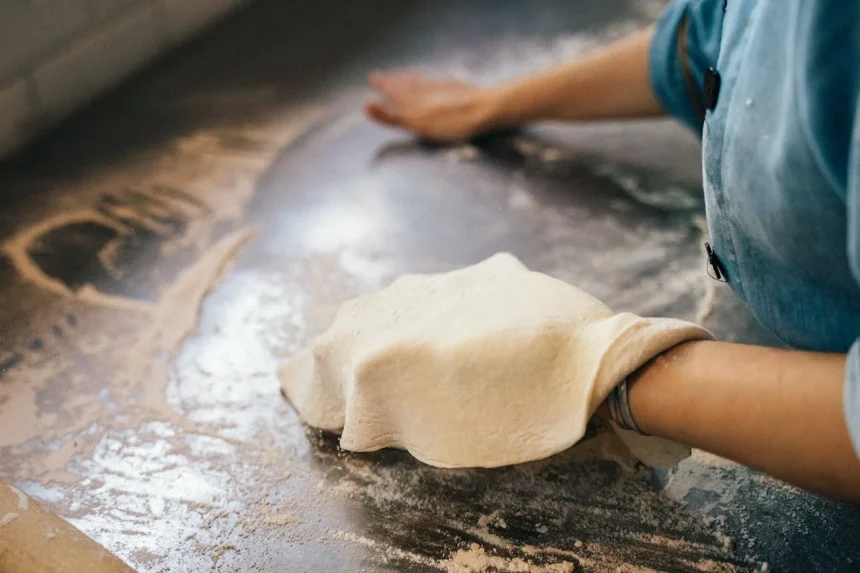Embarking on the journey to open a pizzeria is an adventure filled with excitement and challenges. There’s something about the universal appeal of pizza that makes this business venture attractive to many budding entrepreneurs. Below, we’ve pieced together a comprehensive guide to help you slice through the planning process and launch your pizzeria successfully.
Essential Equipment and Supplies Needed to Start a Pizzeria
Top-notch equipment and supplies are the backbone of any pizzeria’s kitchen. A high-quality pizza oven is your most critical investment as it affects the taste and quality of the pizza, whether you choose a brick oven for a traditional vibe or a conveyor oven for efficiency.
Additionally, refrigeration is paramount, with each pizza prep table providing an organized space for toppings and ensuring ingredients are kept at safe temperatures.
Moreover, dough mixers, peels, dough sheeters, and proofing cabinets will form the workhorses of your preparation process. These tools have to be durable and designed for heavy usage. The right selection of equipment will streamline operations and help your staff maintain consistency in the pizza-making process.
Don’t overlook the importance of smaller wares, such as cutters, pans, racks, and serving utensils. These supplies might seem less significant but are essential for daily operations. High-quality tableware, to-go containers, and delivery bags also contribute to the overall customer experience, both in-house and when enjoying your pizza off-site.
Navigating Local Regulations and Licensing for Your Pizzeria
Before the first slice is served, understanding and adhering to local regulations is vital. This involves securing health department approvals, as well as business and food service licenses. Each region may have different requirements when it comes to restaurant operation, so familiarize yourself with these to avoid costly fines or delays in opening.
Zoning laws will affect where you can locate your business and what changes you might need to make to the property. Often, new business owners need to arrange for inspections of the premises to ensure building code compliance, including fire safety and accessibility standards. These steps are critical in securing the necessary permits to open for business.
Once you’ve laid the groundwork with licenses and permits, it’s also important to stay updated on changes in regulations. Regular training for yourself and your staff on food safety can help keep your restaurant in line with the latest health codes.
Building an Engaging Pizzeria Brand and Online Presence
Your brand is the special sauce of your restaurant’s identity, so developing a strong one is key to captivating potential diners. From the logo to the menu design, each element should reflect the personality of your pizzeria. Consistency across these touchpoints builds recognition and loyalty among your customer base.
In today’s digital age, a compelling online presence is equally as important as the physical aspects of your restaurant. This includes a dynamic website, active social media profiles, and engagement on food review platforms. Customers often turn to the internet first when looking for dining options, so these are crucial steps in ensuring your pizzeria is part of the conversation.
Search engine optimization (SEO) and online marketing strategies can also bolster your visibility. Taking advantage of local SEO tactics will help nearby food lovers find you when they’re searching for their next meal. Online ads and partnerships with food bloggers or influencers can further expand your reach.
Attracting and Retaining Customers With a Unique Dining Experience
The market for Italian food is vast, so setting your restaurant apart is a key strategy in attracting and retaining customers. From inventive topping combinations to offering gluten-free or vegan options, these nuances can make your pizzeria the go-to spot for Italian food aficionados.
Exclusivity through limited-time offers or seasonal specialties can also create buzz and repeat business.
Customer service is a cornerstone of the dining experience. Training your staff to be knowledgeable, welcoming, and efficient reflects greatly on your establishment. Remember, a customer isn’t just buying food; they’re investing in the service and atmosphere that come with it. A positive experience can convert first-time visitors into regulars.
Loyalty programs and community engagement are effective tools for customer retention. Offering rewards for frequent visits or hosting local events can strengthen connections with your patrons. It shows that your establishment values its customers and wants to give back to those who support it.
Altogether, setting up a successful restaurant involves much more than perfecting a recipe. It requires careful planning, meeting legal guidelines, creating an irresistible brand, and crafting a dining experience that customers will crave time and time again.





